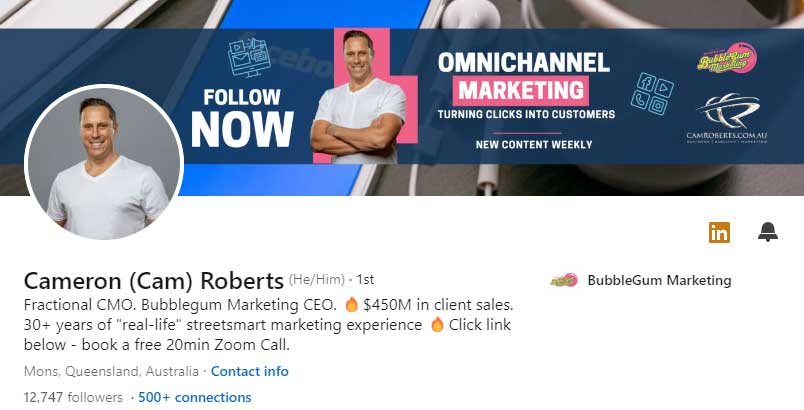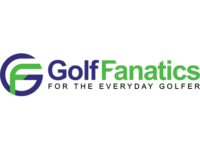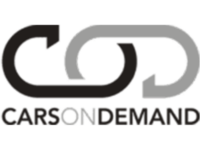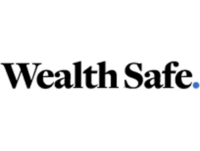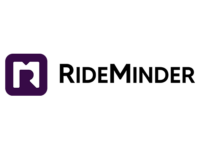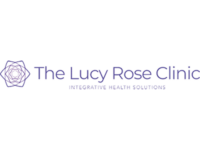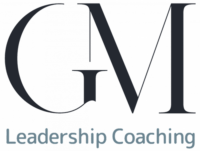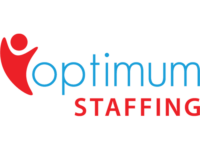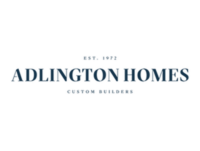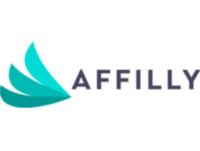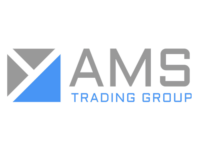How to Find the Perfect Target Audience for Facebook Ads
By Cameron Roberts – Founder & CEO of Bubblegum Marketing,
Posted On April 4, 2025
Before diving into Facebook ads, it’s important to understand the concept of audience segmentation. Audience segmentation involves dividing your potential customers into groups based on shared characteristics. These characteristics can include demographics, interests, behaviors, and more. By segmenting your audience, you can create more personalized and effective ads that resonate with each group.

The Basics of Segmentation
Audience segmentation is more than just a marketing buzzword; it’s a foundational strategy that enhances the precision of your advertising efforts. By categorizing your audience, you ensure that each segment receives messaging that speaks directly to their needs and interests. This approach not only improves engagement but also fosters a deeper connection with your brand.
Types of Segmentation
There are several types of audience segmentation that can be employed, each with its own unique benefits. Demographic segmentation focuses on age, gender, income, and education level. Geographic segmentation considers location, climate, and cultural preferences. Psychographic segmentation delves into lifestyle, values, and personality traits. Behavioral segmentation analyzes purchasing behavior, brand interactions, and user status.
Benefits of Effective Segmentation
Effective audience segmentation leads to numerous benefits for your business. It allows for more efficient allocation of your advertising budget, as you are targeting those most likely to convert. Additionally, it enhances customer satisfaction by providing relevant content, leading to increased brand loyalty. Ultimately, this approach results in higher conversion rates and a greater return on investment.
Identifying Your Ideal Customer
To find your target audience for Facebook ads, start by identifying your ideal customer. This involves creating a detailed profile of the type of person who would be most interested in your product or service.
Demographics
Consider the basic demographic information of your ideal customer. This includes:
- Age: Understanding the age range of your audience helps tailor your messaging and product offerings.
- Gender: Knowing whether your product appeals more to a particular gender can refine your ad targeting.
- Location: Geographic targeting ensures that your ads reach users in specific regions or cities where your product is available.
- Income Level: Determining the income bracket of your audience helps in pricing strategy and product positioning.
Interests and Hobbies
Next, think about the interests and hobbies of your ideal customer. Facebook allows you to target ads based on users’ interests, which can be a powerful tool for reaching the right audience. Consider:
- What are their hobbies? Identifying hobbies gives insight into leisure activities that can be associated with your brand.
- What type of content do they engage with online? Analyzing content preferences helps in curating ads that resonate with your audience’s digital habits.
- Which brands or influencers do they follow? Knowing these affiliations helps position your brand within a community of trusted sources.
Online Behavior
Understanding the online behavior of your target audience can also help you create more effective ads. Consider:
- How often are they online? Recognizing peak activity times can optimize ad scheduling.
- What devices do they use to access Facebook? Device usage insights enable you to tailor ad formats for different screens.
- What types of content do they engage with the most? This knowledge helps in crafting content that captures attention and encourages interaction.

Using Facebook Demographics
Facebook provides a wealth of data about its users, which you can leverage to refine your target audience. Here’s how you can use Facebook’s demographics to your advantage:
Facebook Audience Insights
Facebook Audience Insights is a powerful tool that helps you learn more about your potential customers. It provides information on user demographics, page likes, location, and device usage. By exploring this data, you can gain valuable insights into the characteristics of your target audience.
Navigating Audience Insights
To make the most of Audience Insights, begin by selecting an audience to analyze. You can choose between people connected to your page, a custom audience, or a general Facebook audience. Navigate through sections such as demographics, page likes, and location to gather comprehensive data.
Gleaning Actionable Insights
The insights derived from this tool can inform your ad strategy significantly. For example, discovering that a large portion of your audience resides in urban areas might prompt you to focus on city-centric marketing campaigns. Similarly, understanding that your audience prefers mobile devices can influence ad format decisions.
Custom Audiences
With Custom Audiences, you can target ads to specific groups of people who have already interacted with your brand. This could include past customers, website visitors, or email subscribers. Custom Audiences allow you to reach people who are already familiar with your brand, increasing the likelihood of conversion.
Building a Custom Audience
Creating a Custom Audience is straightforward. Begin by uploading customer information, such as email addresses or phone numbers. Facebook then matches this data with user profiles to create a targeted audience. This enables you to focus on individuals who have previously engaged with your brand.
Advantages of Custom Audiences
Targeting Custom Audiences yields higher conversion rates as these individuals have already expressed interest in your brand. Additionally, it allows for personalized messaging that resonates with their previous interactions, enhancing the customer experience.
Lookalike Audiences
Once you have a Custom Audience, you can use Lookalike Audiences to find new potential customers who share similar characteristics. Facebook analyzes the traits of your Custom Audience and finds similar users, expanding your reach to a broader yet still relevant audience.
Creating Lookalike Audiences
To create a Lookalike Audience, select a source audience, such as a Custom Audience or your Facebook page followers. Facebook then identifies users who exhibit similar behaviors and interests, allowing you to reach new prospects with a higher likelihood of conversion.
Expanding Your Reach
Lookalike Audiences enable you to scale your marketing efforts without sacrificing relevance. This approach allows for effective expansion into new markets while maintaining a focus on quality leads.

Creating Effective Facebook Ads
After identifying your target audience, the next step is creating compelling Facebook ads that speak directly to them. Here are some tips for crafting effective ads:
Crafting Engaging Ad Copy
Your ad copy should be clear, concise, and tailored to your target audience. Use language that resonates with them and highlights the benefits of your product or service. Include a strong call to action that encourages users to take the next step.
Writing with Clarity and Precision
Clarity in your ad copy is paramount. Avoid jargon and complex language; instead, communicate your message in simple, straightforward terms. Precise language ensures your audience quickly understands what you offer and why it matters to them.
Personalizing the Message
Personalization is key to engaging your audience. Use data insights to address specific pain points or desires of your target audience. A personalized message fosters a sense of connection and increases the likelihood of a positive response.
Incorporating Strong Calls to Action
A compelling call to action (CTA) is crucial for driving conversions. Whether it’s “Shop Now,” “Learn More,” or “Sign Up Today,” a strong CTA guides users towards the desired action, increasing engagement and conversion rates.
Designing Eye-Catching Visuals
Visual content is crucial in capturing the attention of users scrolling through their Facebook feed. Use high-quality images or videos that align with your brand and appeal to your audience’s interests and preferences.
Selecting the Right Visuals
Choose visuals that not only capture attention but also convey your brand’s message effectively. High-quality images and videos that resonate with your audience’s interests are more likely to encourage engagement.
Aligning Visuals with Branding
Ensure that your visuals are consistent with your brand’s overall aesthetic. Consistency in colors, fonts, and style reinforces brand recognition and trust. This alignment enhances the professional appearance of your ads.
Utilizing Video Content
Video content is increasingly popular on Facebook, offering dynamic ways to engage your audience. Use videos to tell a story, demonstrate a product, or share customer testimonials, providing a richer experience than static images alone.
Testing and Optimization
To ensure the effectiveness of your ads, regularly test different versions of your ad copy and visuals. Analyze the performance of each variation and optimize your campaigns based on the results. This ongoing process will help you refine your strategy and achieve better results over time.
A/B Testing for Best Results
Implement A/B testing by creating multiple versions of your ads with varying elements such as headlines, visuals, or CTAs. Monitor performance metrics to determine which version resonates best with your audience, allowing for data-driven optimizations.
Monitoring Key Performance Indicators
Track key performance indicators (KPIs) such as engagement rates, click-through rates, and conversion rates. Regular analysis of these metrics provides insights into what aspects of your ads are working and where improvements are needed.
Iterative Optimization
Optimization is not a one-time task but an ongoing process. Continuously refine your ad campaigns based on performance data, audience feedback, and market trends. This iterative approach ensures your ads remain effective and relevant over time.

Measuring Success
To determine the success of your Facebook ad campaigns, you need to track and analyze key metrics. These metrics will provide insights into how well your ads are performing and whether they are reaching the right audience.
Key Metrics to Track
Some important metrics to track include:
- Click-Through Rate (CTR): The percentage of users who clicked on your ad after seeing it.
- Conversion Rate: The percentage of users who completed a desired action, such as making a purchase or signing up for a newsletter.
- Cost Per Click (CPC): The average cost you pay for each click on your ad.
- Return on Ad Spend (ROAS): The revenue generated for every dollar spent on advertising.
Understanding Click-Through Rate (CTR)
CTR is a critical metric that indicates how compelling your ad is to your audience. A high CTR suggests that your ad copy and visuals resonate well with viewers, prompting them to click and learn more about your offering.
Analyzing Conversion Rate
Conversion rate is a direct measure of your ad’s effectiveness in driving desired actions. By analyzing this metric, you can assess whether your ad strategy successfully turns interest into tangible outcomes, such as sales or sign-ups.
Evaluating Cost Efficiency
Metrics like CPC and ROAS help evaluate the cost efficiency of your ad campaigns. A low CPC indicates cost-effective clicks, while a high ROAS signifies a strong return on your advertising investment, guiding budget allocation decisions.
Making Data-Driven Decisions
Analyzing these metrics is not just about tracking numbers; it’s about drawing actionable insights to inform your future strategies. By understanding what works and what doesn’t, you can fine-tune your approach to maximize the impact of your Facebook ads.
💼 Want to connect with a marketing expert? Join me on LinkedIn for cutting-edge strategies, insights, and business growth tips.
Conclusion
Finding the perfect target audience for your Facebook ads is essential for maximizing your advertising efforts. By understanding audience segmentation, leveraging Facebook’s demographics, and creating compelling ads, you can reach the right people and achieve your marketing goals. Remember to continuously test and optimize your campaigns to ensure ongoing success.
With these strategies in place, you’ll be well on your way to running successful Facebook ad campaigns that drive engagement and conversions. The key is to remain adaptive and responsive to the ever-evolving digital landscape, ensuring your ads are always relevant and impactful.
WANT TO BE OUR NEXT SUCCESS STORY?
Book a Free Consult
Schedule a 15-minute Free Consultation via Zoom meetings with our Director, Cam Roberts by clicking the button below now:
Recent Articles
- Why Your Email Click Rates Look Low in 2025
- How Our eCommerce Marketing Agency Drove 121% Growth
- What Is Google BARD? A Guide to Google’s New AI
- Facebook Ads Budgeting & Strategies for 2025
- Top Marketing Strategies from Fortune 500 Companies
- Weird & Wonderful: Things Google Probably Doesn’t Want You to Know
- Top 7 Mistakes Businesses Make Without a Facebook Ads Specialist
- Why Automated Sales Funnels Are a Game-Changer for Small Businesses
- How to Choose the Right Facebook Ads Agency in 2025
- Social Media Advertising Trends 2025 for Business Growth
Request A Quote
Request A Quote for your next Website or Funnel Project below:
